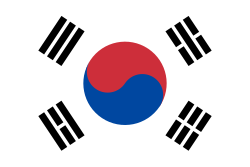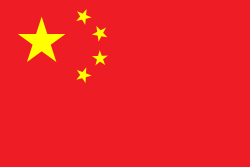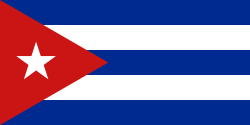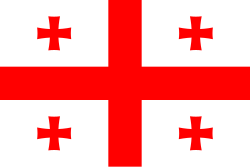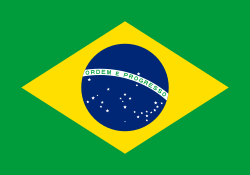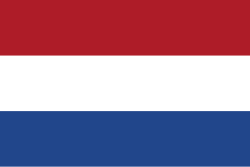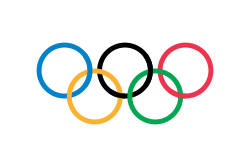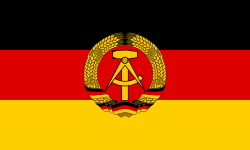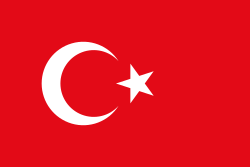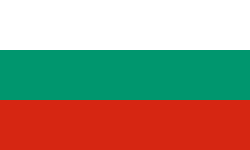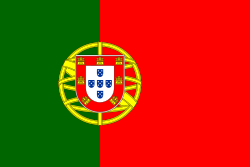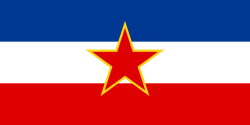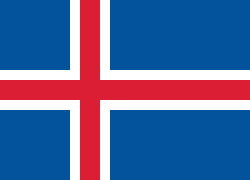Judo vid olympiska sommarspelen
| Judo vid olympiska sommarspelen | |||||
 | |||||
| Internationellt förbund | IJF | ||||
|---|---|---|---|---|---|
Grenar
| |||||
| |||||
| Medaljörer | |||||
Judo blev en olympisk sport vid olympiska sommarspelen 1964 i Tokyo, men endast herrarna tävlade. År 1968 uteblev judo från det olympiska programmet men återkom sedan och har varit sedan dess varit med vid varje olympiskt sommarspel. Vid olympiska sommarspelen 1988 tävlade även damerna, men endast i form av demonstrationssport. Damerna fick medaljer först 1992. Inför olympiska sommarspelen 2020 beslutades att en mixad lagtävling skulle införas på programmet.[1]
Tävlingens form
De tävlande i judo delas in i viktklasser. Baserat på singelutslagning ges guld- och silvermedaljer. Två bronsmedaljer delas ut i varje viktklass.
I lagtävlingarna består lagen av sex judokas i olika viktklasser, tre damer i klasserna under 57 kg, under 70 kg och över 70 kg samt tre herrar i klasserna under 73 kg, under 90 kg och över 90 kg.[2] Av de tolv lag som deltar går de fyra högst rankade lagen direkt till semifinaler där de möter vinnarna från kvartsfinalerna.[3]
Viktklasser
Det har funnits mellan 4 och 8 olympiska viktklasser (nu 7) genom åren. Nedan visas hur de förändrats.
Herrar
| 1964 | 1972-1976 | 1980-1984 | 1988-1992 | 1996-2020 [4] |
|---|---|---|---|---|
| Öppet Inga viktklasser | ||||
| Tungvikt +80 kg | Tungvikt +93 kg | Tungvikt +95 kg | Tungvikt +100 kg | |
| Halv tungvikt 90-100 kg | ||||
| Halv tungvikt 86-95 kg | ||||
| Halv tungvikt[5] 80-93 kg | ||||
| Mellanvikt 81-90 kg | ||||
| Mellanvikt 78-86 kg | ||||
| Halv mellanvikt 73-81 kg | ||||
| Mellanvikt 68-80 kg | Mellanvikt 70-80 kg | |||
| Halv mellanvikt 71-78 kg | ||||
| Lättvikt 66-73 kg | ||||
| Lättvikt 65-71 kg | ||||
| Halv mellanvikt 63-70 kg | ||||
| Lättvikt -68 kg | ||||
| Halv lättvikt 60-66 kg | ||||
| Halv lättvikt 60-65 kg | ||||
| Lättvikt -63 kg | ||||
| Extra lättvikt -60 kg | ||||
| 4 | 6 | 8 | 7 | 7 |
Damer
| 1992-1996 | 2000-2020 |
|---|---|
| Tungvikt +72 kg | Tungvikt +78 kg |
| Halv tungvikt 70-78 kg | |
| Halv tungvikt 66-72 kg | |
| Mellanvikt 63-70 kg | |
| Mellanvikt 61-66 kg | |
| Halv mellanvikt 57-63 kg | |
| Halv mellanvikt 56-61 kg | |
| Lättvikt 52-57 kg | |
| Lättvikt 52-56 kg | |
| Halv lättvikt 48-52 kg | |
| Extralättvikt -48 kg | |
| 7 | 7 |
Medaljtabell
56 nationer har vunnit medaljer vid den olympiska judon. Alla världsdelar utom Antarktis har någon gång vunnit medalj. Japan har leder medaljligan, följt av Frankrike och Sydkorea.
Uppdaterad efter olympiska sommarspelen 2020
| Nr | Nation | Guld | Silver | Brons | Totalt |
|---|---|---|---|---|---|
| 1 | 48 | 21 | 27 | 96 | |
| 2 | 16 | 13 | 28 | 57 | |
| 3 | 11 | 17 | 18 | 46 | |
| 4 | 8 | 3 | 11 | 22 | |
| 5 | 6 | 15 | 16 | 37 | |
| 6 | 5 | 5 | 13 | 23 | |
| 7 | 5 | 4 | 7 | 16 | |
| 8 | 4 | 5 | 3 | 12 | |
| 9 | 4 | 4 | 9 | 17 | |
| 10 | 4 | 3 | 17 | 24 | |
| 11 | 4 | 2 | 18 | 24 | |
| 12 | 3 | 3 | 15 | 21 | |
| 13 | 3 | 3 | 2 | 8 | |
| 14 | 3 | 1 | 2 | 6 | |
| 15 | 3 | 0 | 0 | 3 | |
| 16 | 2 | 4 | 8 | 14 | |
| 17 | 2 | 3 | 2 | 7 | |
| 18 | 2 | 2 | 4 | 8 | |
| 19 | 2 | 1 | 10 | 13 | |
| 20 | 2 | 1 | 3 | 6 | |
| 21 | 2 | 0 | 2 | 4 | |
| 22 | 2 | 0 | 0 | 2 | |
| 23 | 1 | 4 | 6 | 11 | |
| 24 | 1 | 4 | 3 | 8 | |
| 25 | 1 | 3 | 6 | 10 | |
| 26 | 1 | 2 | 6 | 9 | |
| 27 | 1 | 2 | 3 | 6 | |
| 28 | 1 | 2 | 2 | 5 | |
| 29 | 1 | 1 | 2 | 4 | |
| 30 | 1 | 0 | 1 | 2 | |
| 1 | 0 | 1 | 2 | ||
| 1 | 0 | 1 | 2 | ||
| 1 | 0 | 1 | 2 | ||
| 34 | 0 | 8 | 12 | 20 | |
| 35 | 0 | 2 | 5 | 7 | |
| 0 | 2 | 5 | 7 | ||
| 37 | 0 | 2 | 2 | 4 | |
| 38 | 0 | 1 | 5 | 6 | |
| 39 | 0 | 1 | 3 | 4 | |
| 40 | 0 | 1 | 2 | 3 | |
| 41 | 0 | 1 | 1 | 2 | |
| 0 | 1 | 1 | 2 | ||
| 0 | 1 | 1 | 2 | ||
| 0 | 1 | 1 | 2 | ||
| 45 | 0 | 1 | 0 | 1 | |
| 0 | 1 | 0 | 1 | ||
| 47 | 0 | 0 | 3 | 3 | |
| 0 | 0 | 3 | 3 | ||
| 0 | 0 | 3 | 3 | ||
| 50 | 0 | 0 | 2 | 2 | |
| 0 | 0 | 2 | 2 | ||
| 52 | 0 | 0 | 1 | 1 | |
| 0 | 0 | 1 | 1 | ||
| 0 | 0 | 1 | 1 | ||
| 0 | 0 | 1 | 1 | ||
| 0 | 0 | 1 | 1 | ||
| 0 | 0 | 1 | 1 | ||
| Totalt (57 nationer) | 152 | 151 | 304 | 607 | |
Referenser
- ^ (12 juni 2017). Tävlingsprogram i Tokyo 2020 spikat. Sveriges Olympiska Kommitté. Läst 3 november 2019.
- ^ Judo. tokyo2020.org. Läst 3 november 2019.
- ^ (11 juni 2017). The Judo Mixed Team Event in the Olympic Games. International Judo Federation. Läst 3 november 2019.
- ^ ”Viktklasserna inför 2008 listas” (
 PDF). olympic.org. Arkiverad från originalet den 20 augusti 2006. https://web.archive.org/web/20060820030213/http://multimedia.olympic.org/pdf/en_report_1056.pdf. Läst 10 augusti 2006.
PDF). olympic.org. Arkiverad från originalet den 20 augusti 2006. https://web.archive.org/web/20060820030213/http://multimedia.olympic.org/pdf/en_report_1056.pdf. Läst 10 augusti 2006. - ^ Kallades "Lätt tungvikt" i officiella rapporter för spelen 1972 och 1976.
| |||||||||||||||||||||||
| ||||||||||||||
Media som används på denna webbplats
The civil ensign and flag of Belgium. It is identical to Image:Flag of Belgium.svg except that it has a 2:3 ratio, instead of 13:15.
The flag of Slovenia.
- "The construction sheet for the coat of arms and flag of the Republic of Slovenia
- is issued in the Official Gazette Uradni list Republike Slovenije #67, 27 October 1994
- as the addendum to the Law on the coat of arms and flag."
Olympic Movement flag
Proportions 2:3, created 1913, adopted 1914, first used 1920.
- Colors as per http://fairspielen.de/wp-content/uploads/2015/09/Annexe-3-Olympism_and_the_Olympic_Symbol_-_Principles_and_Usages_Guide-1.pdf
- blue: PMS 3005C
- yellow: PMS 137C
- black: PMS 426C
- green: PMS 355C
- red: PMS 192C
- Dimensions of the rings taken from http://fairspielen.de/wp-content/uploads/2015/09/Annexe-3-Olympism_and_the_Olympic_Symbol_-_Principles_and_Usages_Guide-1.pdf
Kanadas flagga, införd 1965; denna version med Pantone‐nyanser. Nuvarande utformning ersatte den tidigare kanadensiska Red Ensign.
Flag of Israel. Shows a Magen David (“Shield of David”) between two stripes. The Shield of David is a traditional Jewish symbol. The stripes symbolize a Jewish prayer shawl (tallit).
Flag of the unified Team of Germany for the Olympic Games, 1960–1968.
Chinese Taipei Olympic Flag. According to the official website of Chinese Taipei Olympic Committee, Blue Sky(circle) & White Sun(triangles) above the Olympic rings is neither the National Emblem of the Republic of China, nor the Party Emblem of Kuomintang (KMT), but a design in between, where the triangles do not extend to the edge of the blue circle, as registered at International Olympic Committee in 1981 and digitally rendered in 2013. Besides, the blue outline of the five-petaled plum blossom is broader than the red one. Moreover, the CMYK code of the blue one and the Blue Sky & White Sun is "C100-M100-Y0-K0", and different from the Olympic rings (C100-M25-Y0-K0). Note that it's the only version recognized by IOC.
Flag of Portugal, created by Columbano Bordalo Pinheiro (1857–1929), officially adopted by Portuguese government in June 30th 1911 (in use since about November 1910). Color shades matching the RGB values officially reccomended here. (PMS values should be used for direct ink or textile; CMYK for 4-color offset printing on paper; this is an image for screen display, RGB should be used.)
Flag of the Socialist Federal Republic of Yugoslavia (1946-1992).
The design (blazon) is defined in Article 4 of the Constitution for the Republic of Yugoslavia (1946). [1]
Flag of the Socialist Federal Republic of Yugoslavia (1946-1992).
The design (blazon) is defined in Article 4 of the Constitution for the Republic of Yugoslavia (1946). [1]
Olympic Rings without "rims" (gaps between the rings), As used, eg. in the logos of the 2008 and 2016 Olympics. The colour scheme applied here was specified in 2023 guidelines.
Olympic Rings without "rims" (gaps between the rings), As used, eg. in the logos of the 2008 and 2016 Olympics. The colour scheme applied here was specified in 2023 guidelines.
Flag of the unified Team of Germany for the Olympic Games, 1960–1968.
Pictograms of Olympic sports - Judo. This is unofficial sample picture. Images of official Olympic pictograms for the 1948 Summer Olympics and all Summer Olympics since 1964 can be found in corresponding Official Reports.


